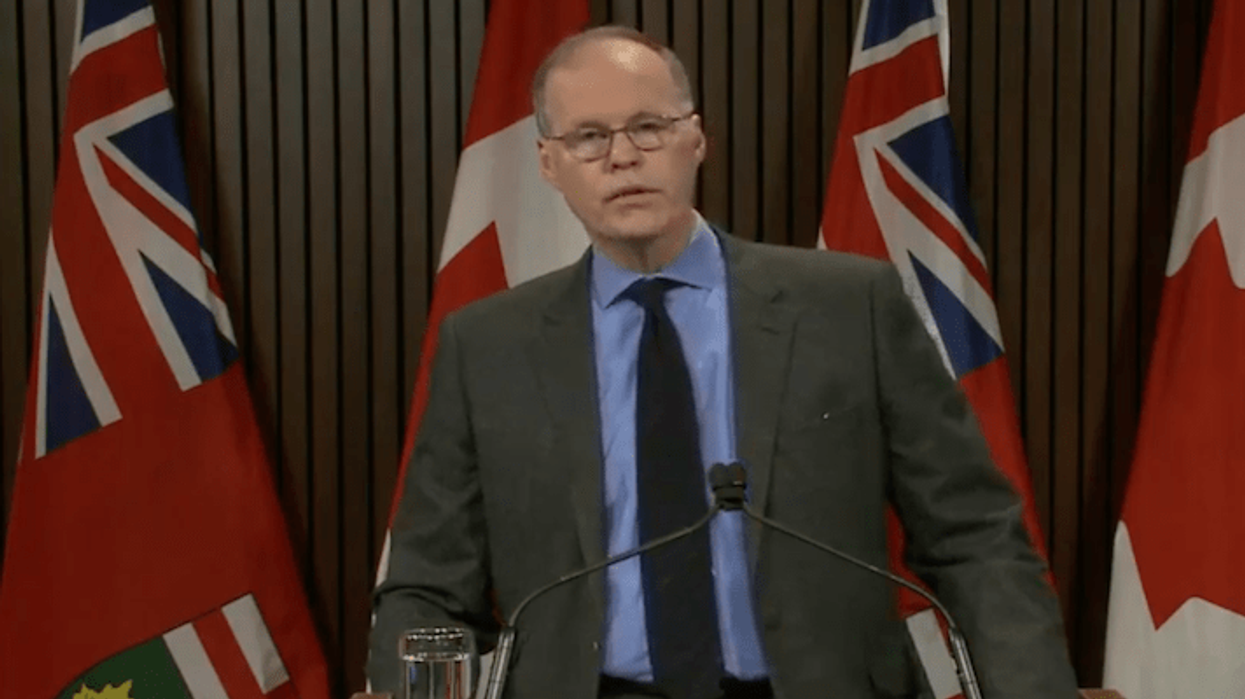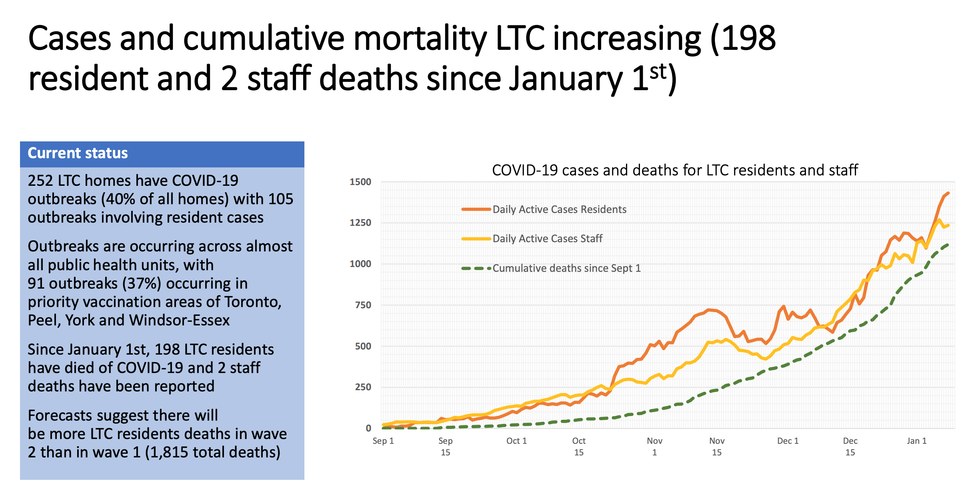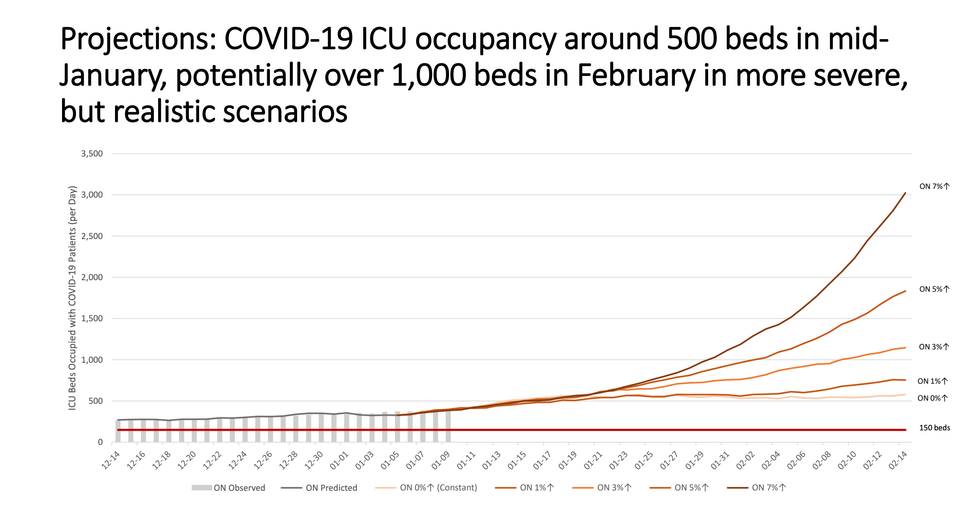The Ontario government has announced updated coronavirus modelling that revealed if Ontarians don't significantly reduce their contact with others, the province's health system will become overwhelmed and deaths will exceed first-wave totals before a vaccine has time to take effect.
On Tuesday morning, during a news conference at Queen’s Park, Matthew Anderson, president and CEO of Ontario Health, Adalsteinn Brown, dean of the Dalla Lana School of Public Health at the University of Toronto, and Dr. Barbara Yaffe, Ontario’s associate chief medical officer of health, came together to discuss Ontario’s updated modelling data concerning the possible impact of COVID-19 in the province, which paints a stark outlook of what's to come in the months ahead.
"We're at a dangerous point," said Dr. Adalsteinn Brown, who added that there are now cases of COVID-19 in every region of Ontario and that the province's hospitals are facing a potentially deadly influx of patients.
According to the findings, growth in cases has accelerated since the previous modelling and is over 7% on "the worst days."
READ: Ontario to Lower the Cost of Hydro During Provincewide Lockdown
The province's latest modelling suggests that despite restrictions put in place last month, mobility and contacts between Ontarians have not decreased. The new data also revealed that while a majority of people are trying to limit the spread of the virus by following public health advice, case numbers will not go down until more people follow suit.
The new modelling also shows that 252 (nearly 40%) of the province's long-term care homes now have active outbreaks of the virus. What's more, since January 1, 2021, 198 LTC residents have died of COVID-19 and two staff deaths have been reported.
Current forecasts suggest there will be more LTC residents deaths in wave 2 than in wave 1 when 1,815 total deaths were recorded. According to the province, the cumulative number of LTC resident COVID-19 deaths could be greater than 2,600 by February 14 in the "worst-case" scenario.
The latest modelling also revealed that patients with COVID-19 now occupy more than 400 ICU beds in Ontario, leading to surgeries and other critical procedures to be delayed or cancelled, which will lead to "real consequences for health."
What's more, COVID-19 ICU occupancy is expected to reach around 500 beds in mid-January and potentially over 1,000 beds in February in more severe, but realistic scenarios.
The modelling also revealed that a new variant of concern of SARS-CoV-2 (B117), which is now in Ontario, could drive much higher case counts, ICU occupancy, and mortality if community transmission occurs. The doubling time for cases could drop by more than 2/3.
The new modelling figures from the province were released ahead of a news conference set for 1 pm, where Premier Doug Ford is expected to announce new public health restrictions.
Tuesday's announcement comes as Ontario reported 2,903 new COVID-19 cases along with 41 more deaths, while hospitalizations grew by more than 10% in a single day.























